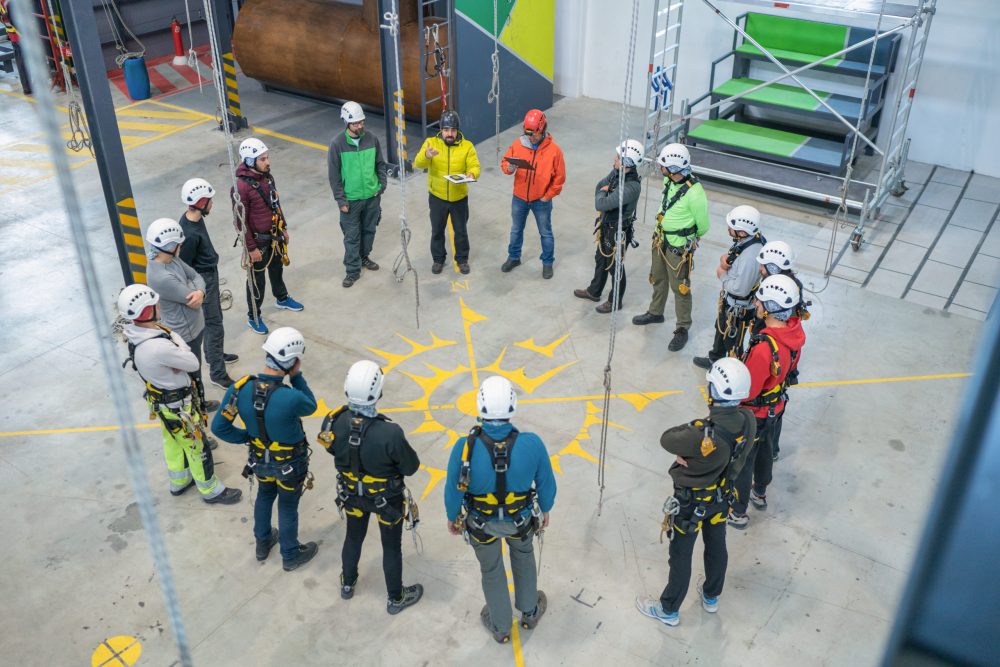Safety meetings are vital for keeping your employees safe, providing pertinent details on safety goals, safety improvements, and new working standards. Unfortunately, there are times when employees do not take these safety meetings seriously. When employees are resistant to engage, what steps can an organization take to make sure information that’s needed is passed along? Below are some tips for ensuring that your employees stay involved and participate in weekly safety meetings.
Get Them to Show Up
Clear communication is key for ensuring employee attendance. Get the word out early via regularly used channels of communication — email, instant messaging systems, flyers, announcements, etc. Make sure these messages include pertinent details about location, time, and the meeting’s theme, and that these details are clear and concise. By planning ahead, and releasing information with enough lead time, organizations are able to follow up regularly to make sure employees have heard — loud and clear — the important “w’s” for the meeting: the when, the where, and the what.
Set the Right Expectations
A quick way to deal a blow to employee morale is with a perceived bait-and-switch. If meeting details are intentionally vague, and employees find out in the moment that there is a mandatory quiz or longer than expected meeting time, employees will shut down in the room.
Being upfront with details on the meeting sets realistic expectations and will increase employee engagement with the safety material. If there are participatory elements such as employees are expected to prepare questions, or if the meeting is a “lunch and learn,” it’s important to relay this information ahead of time. Setting the stage, as early as possible, will help temper expectations.
Time the Meeting Appropriately
Timing is everything. It lands punchlines, it closes sales, and it helps people learn. Choosing the right time to schedule a meeting can be the difference between 100% attendance and engagement and a distracted, disengaged audience. Planning a meeting immediately after lunch, or outside normal business hours can be detrimental.
Remember, employees are people, and people respond best to a steady, practiced routine. Shifting times or choosing inopportune moments will curb engagement and information retention. Having a brief (20–30 minute) weekly or monthly meeting on the same day and time will sharpen focus and keep employees in the moment.
Deliver the Message Enthusiastically
Though it may be difficult to deliver a fast, enthusiastic message about basic ladder safety or the importance of a hardhat, delivering the message in an upbeat, energetic, positive way will keep employees eyes and ears trained on the information. Engage with teams instead of lecturing them and find ways to promote participation rather than leaving people in their chairs. Things like hand-outs, hands-on demonstrations, open conversation, and small group breakout sessions can really help employees stay focused and take things more seriously.
Ask for Feedback
At the conclusion of the meeting, be sure to ask for feedback on the various ways trainings and meetings can be improved in the future. Ask about topics employees would like to see covered and then cover them in follow-up sessions. The more employees know their opinions matter, the more likely they will be to take safety trainings seriously.
How organizations solicit feedback is equally important. This is largely dependent on company culture, but often, employees respond better to anonymous, open feedback channels. There are multiple options to collect the feedback itself, whether via written suggestion-card or an email to attendees with attached surveys. What is most important is that employees see their suggestions translated into action.
At the end of the day, safety meetings do not serve their intended purpose if employees aren’t engaged. Implementing clearly communicated expectations, setting dedicated meeting times, and utilizing employee suggestions to better structure future training and sessions will help boost employment excitement, engagement, and attendance. Once employees show up and learn the information, it will translate directly into more safety goals and milestones achieved for your organization.
Optimum Safety Management provides the information and services to help companies develop safety leaders and improve overall safety performance. For more information on how Optimum Safety Management can assist with your businesses’ safety needs, contact an expert today, or reach out via phone at 630-759-9908.







